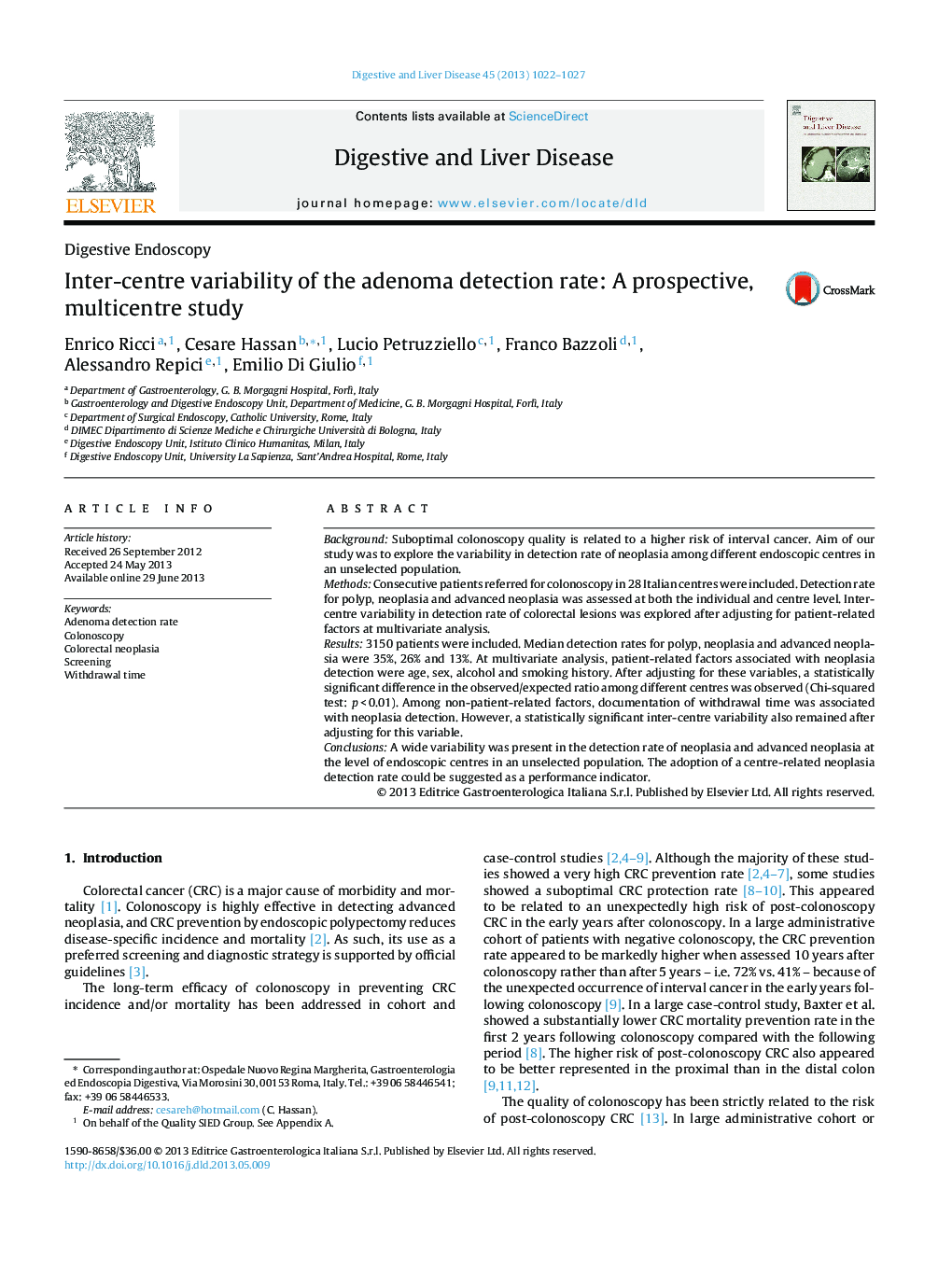| Article ID | Journal | Published Year | Pages | File Type |
|---|---|---|---|---|
| 6088728 | Digestive and Liver Disease | 2013 | 6 Pages |
BackgroundSuboptimal colonoscopy quality is related to a higher risk of interval cancer. Aim of our study was to explore the variability in detection rate of neoplasia among different endoscopic centres in an unselected population.MethodsConsecutive patients referred for colonoscopy in 28 Italian centres were included. Detection rate for polyp, neoplasia and advanced neoplasia was assessed at both the individual and centre level. Inter-centre variability in detection rate of colorectal lesions was explored after adjusting for patient-related factors at multivariate analysis.Results3150 patients were included. Median detection rates for polyp, neoplasia and advanced neoplasia were 35%, 26% and 13%. At multivariate analysis, patient-related factors associated with neoplasia detection were age, sex, alcohol and smoking history. After adjusting for these variables, a statistically significant difference in the observed/expected ratio among different centres was observed (Chi-squared test: p < 0.01). Among non-patient-related factors, documentation of withdrawal time was associated with neoplasia detection. However, a statistically significant inter-centre variability also remained after adjusting for this variable.ConclusionsA wide variability was present in the detection rate of neoplasia and advanced neoplasia at the level of endoscopic centres in an unselected population. The adoption of a centre-related neoplasia detection rate could be suggested as a performance indicator.
